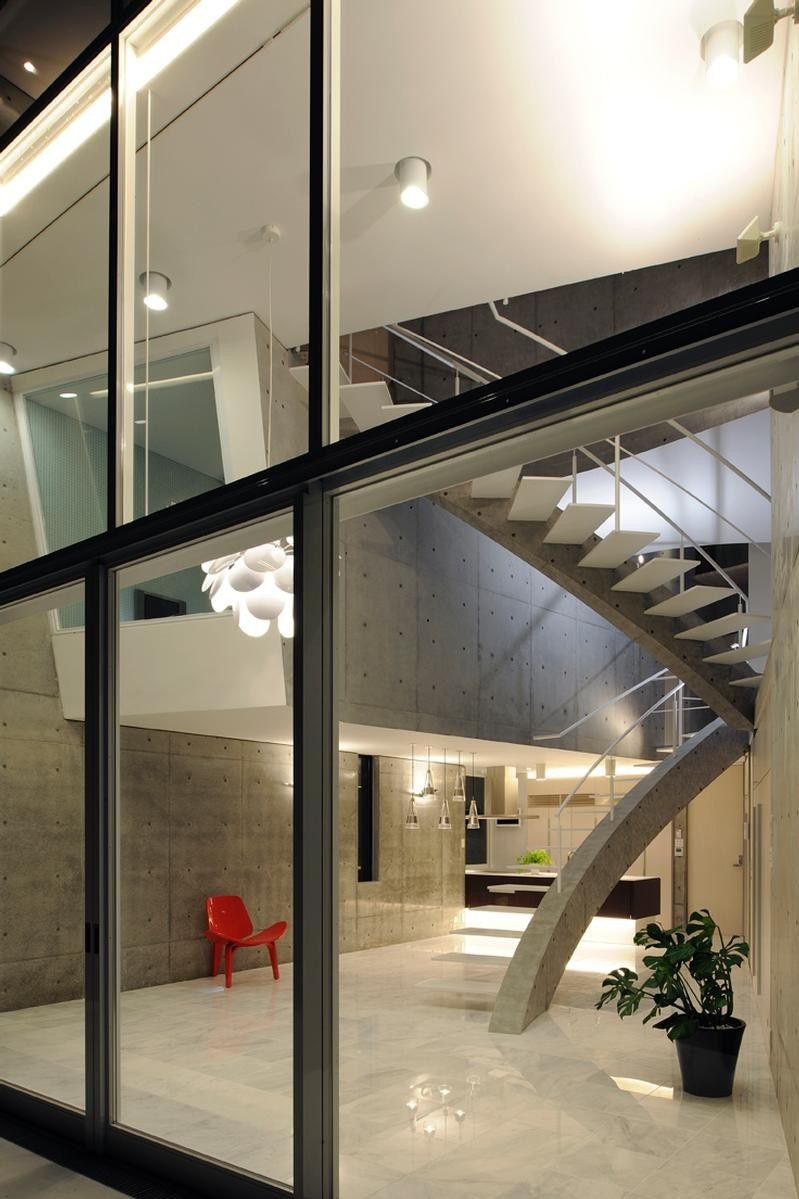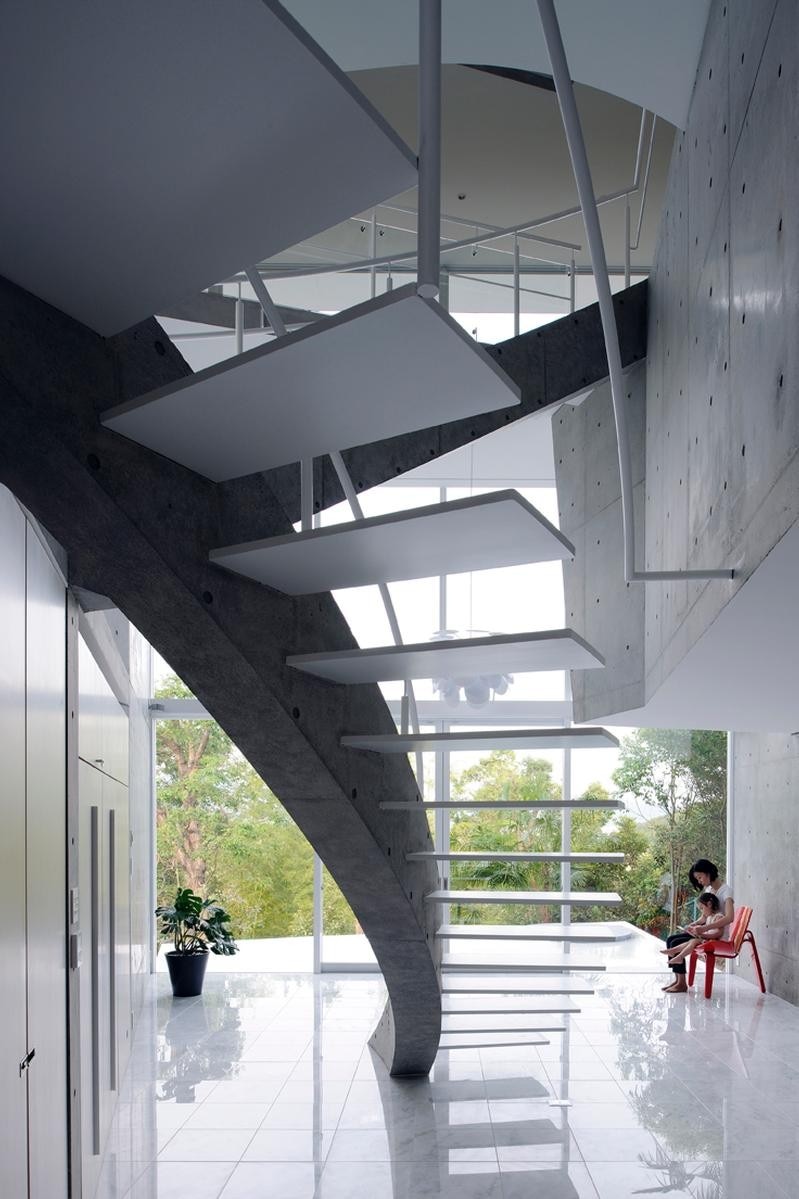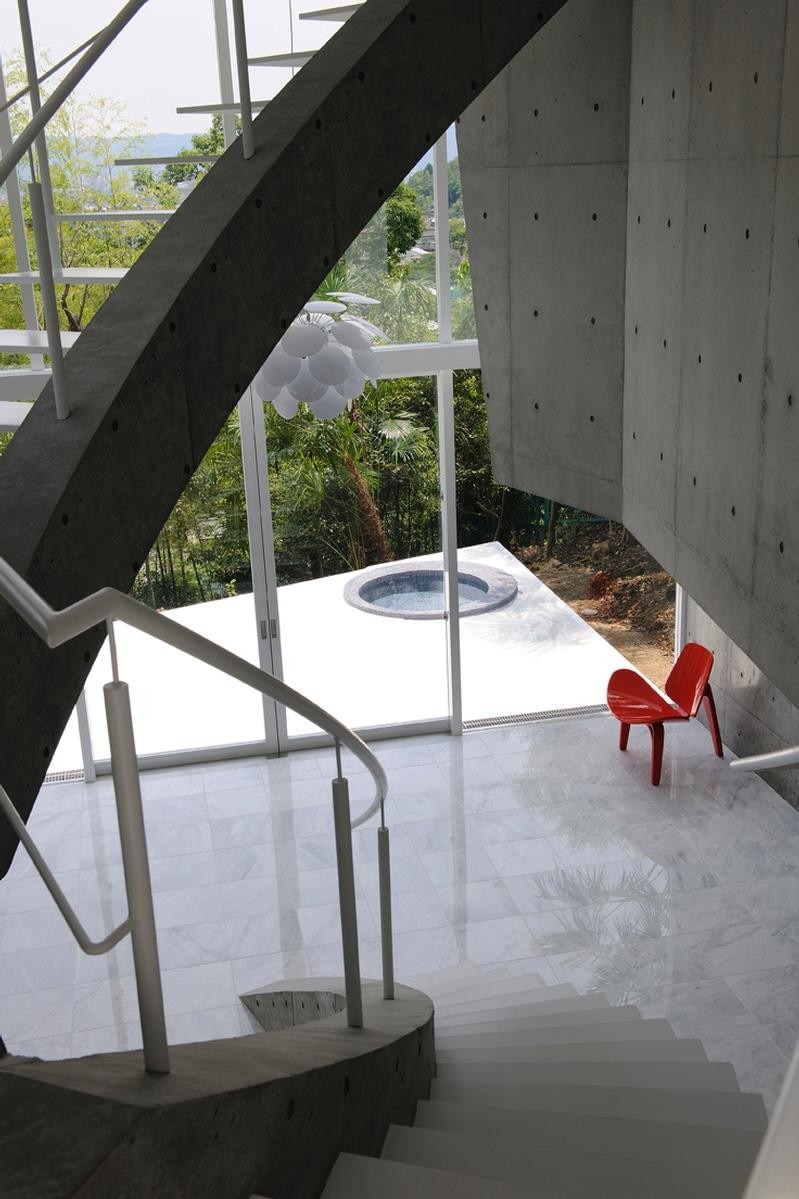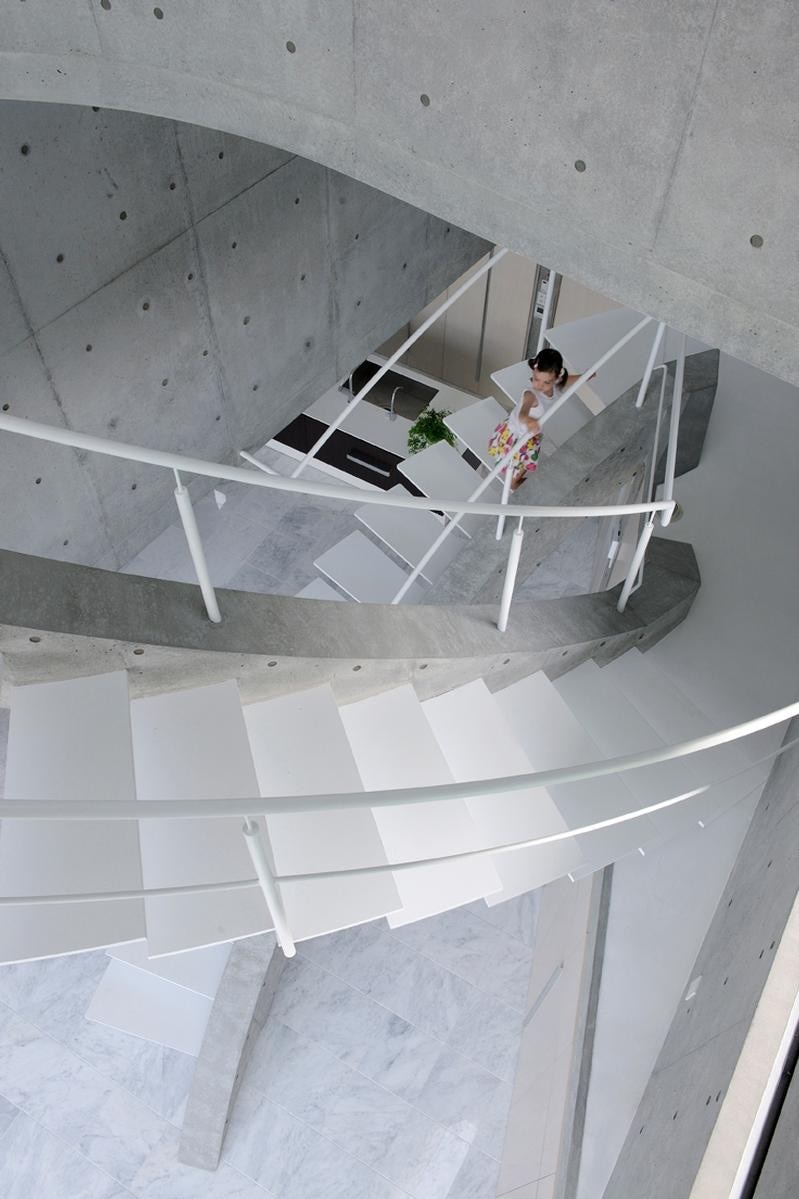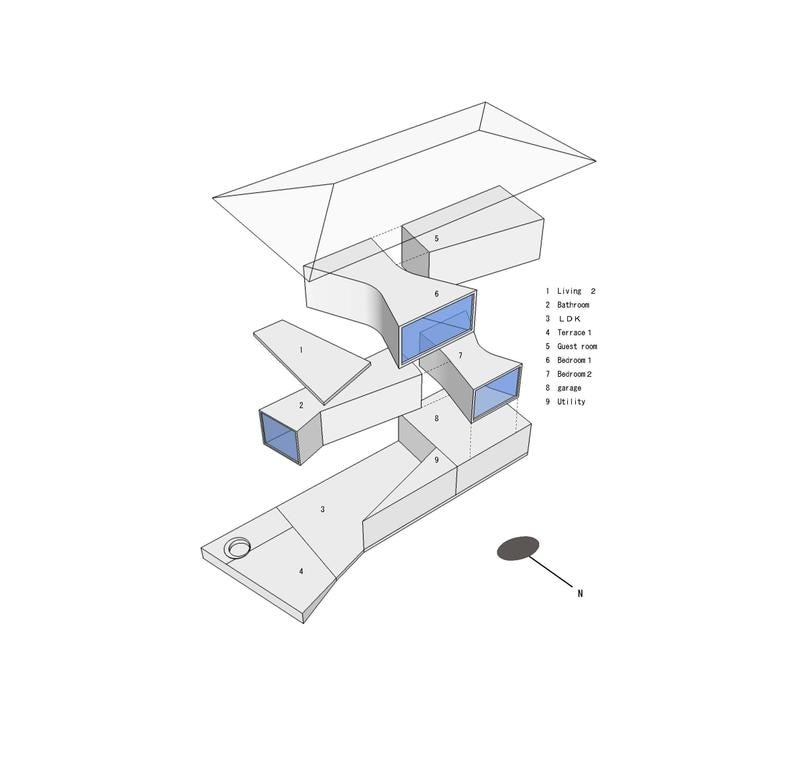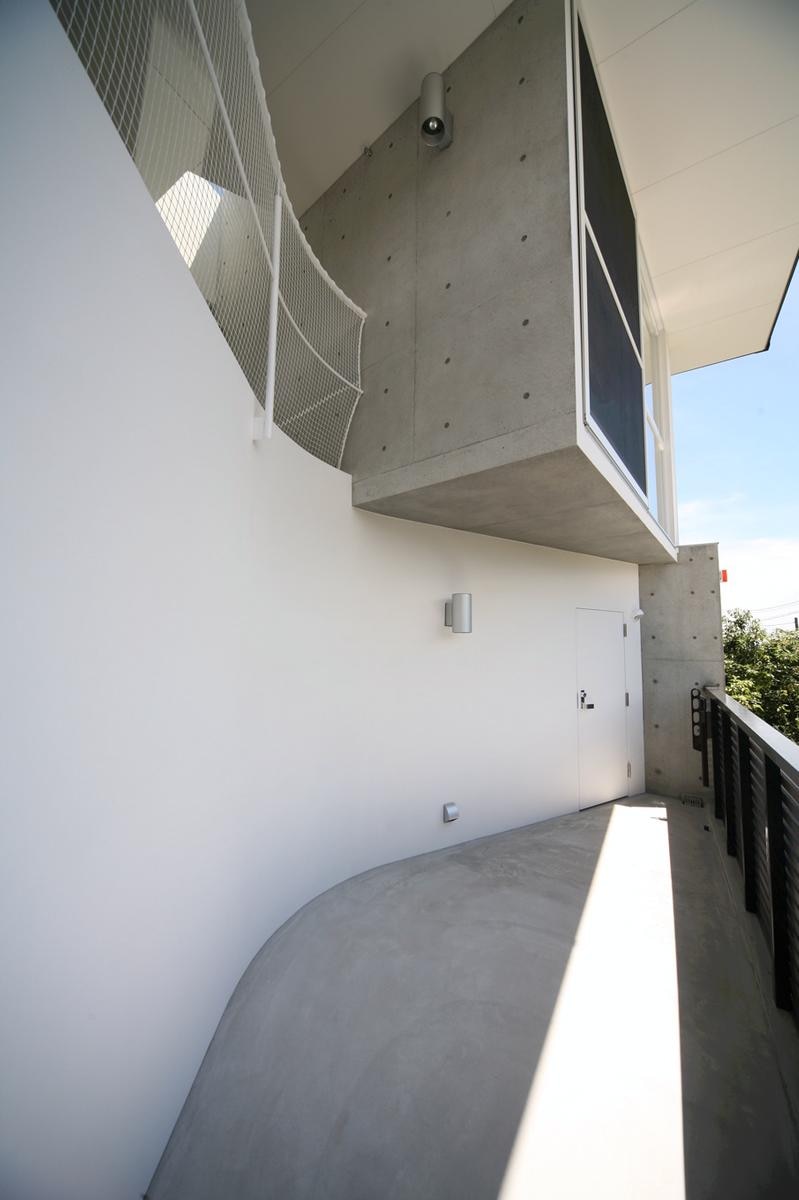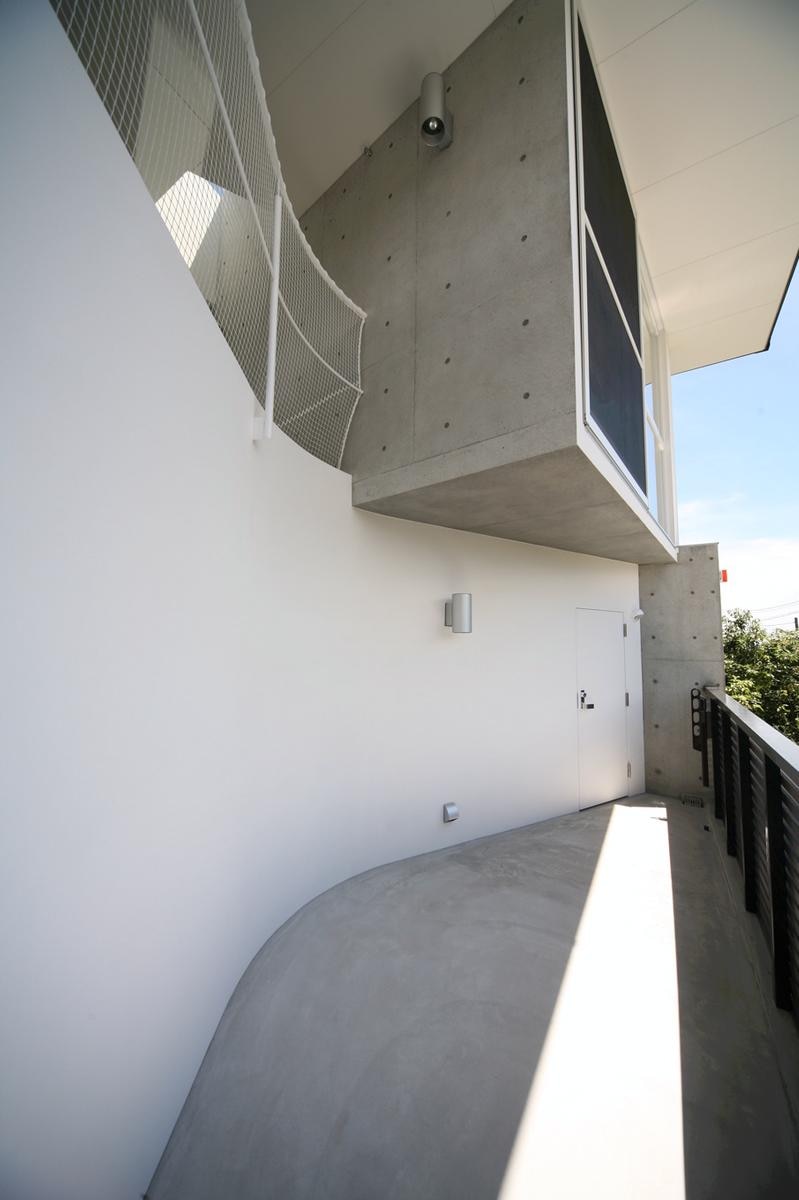Therefore the house is conceived of as a large simple container with private spaces lodged almost randomly within. But with views in all directions the randomness is orchestrated.
There are three primary elements at work in this composition. The main external walls (running east/west), the private volumes (overlapping and bridging) and the resultant void space extending above the LDK.
The main living, dining, kitchen area on the first floor opens onto the main terrace facing the garden to the east allowing classical indoor/outdoor living, and the ceiling height in this area varies from 2.5m to 7.5m. Only as you move through this area can you clearly perceive the three primary elements.
The two main bedrooms bridge the building, and their north/south facing walls of glass allow the external cladding to continue into the rooms, one white plaster, one black timber) The bathroom on the second floor has a large internal window overlooking the garden to the east and the guest bedroom on the third floor pushes straight out to the west. Beside and below this bedroom are two minor terraces that spatially overlap. The second lounge area on the third floor is just a floor slab, a viewing platform that bridges the main void and allows sweeping views of the city to the east. There are also two top-lights allowing vertical views to the sky. Externally the house is clad in traditional materials of burnt cedar boards (with clear lacquer finish) and white plaster. The garage door facing the street (to the west) is fully camouflaged as a wall of horizontal louvers that continues up to form the railing for the second floor terrace.
But it is the fluidity of the resultant void spaces and the curved connecting stairways that finally let the house go free. It is best understood not from one ideal position but rather as you move through the composition. There are many different kinds of spaces and connections in this house that work to create an extremely ‘socialized’ kind of environment.
atelier BORONSKI is a bilingual design office based in Kyoto and headed by a New Zealand born architect educated in Japan.
